How to make a flower bed from a tree stump?
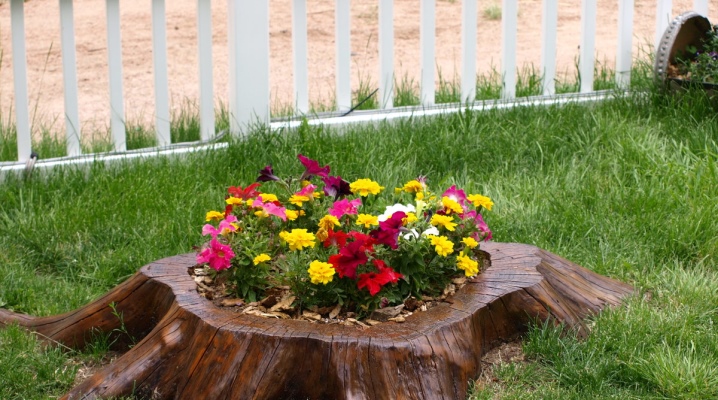
When there is a large stump on the site, then in most cases they try to uproot it, not seeing any other use for the remains of a once beautiful tree. But if you approach the solution of the problem creatively, then it is possible to find many ways to avoid the far from the easiest work and find a new application for the saw cut and the often powerful root system.
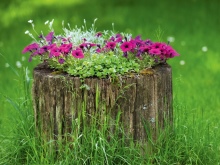
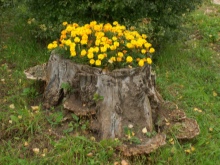

Material selection
A stump flower bed is the first thing that a site owner can think of. In this case, a large flower garden will not work, since it is rarely possible to find a giant tree on the site, after the death of which a huge stump remains. Most often, novice designers have to deal with medium-sized stumps. But even in this case, quite interesting compositions can turn out if you additionally use small logs dug into the ground. You can also use leftovers from large sawn branches in your work.
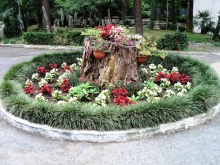
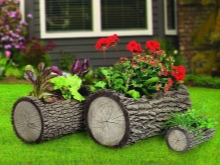

The flower garden looks very nice, the border of which is made of birch logs. They should be small, about the same size. They are dug into the ground around the stump at a certain distance. In this case, the saw cut is the center of the flower garden, and the gap between it and the palisade is filled with bright colors.
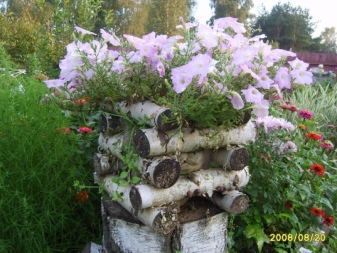
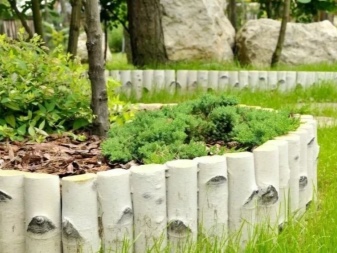
Ordinary driftwood can be a good decoration for your garden. The only thing that the owner of the site has to take care of is the safety of the tree, which inevitably rots and is damaged by bugs.
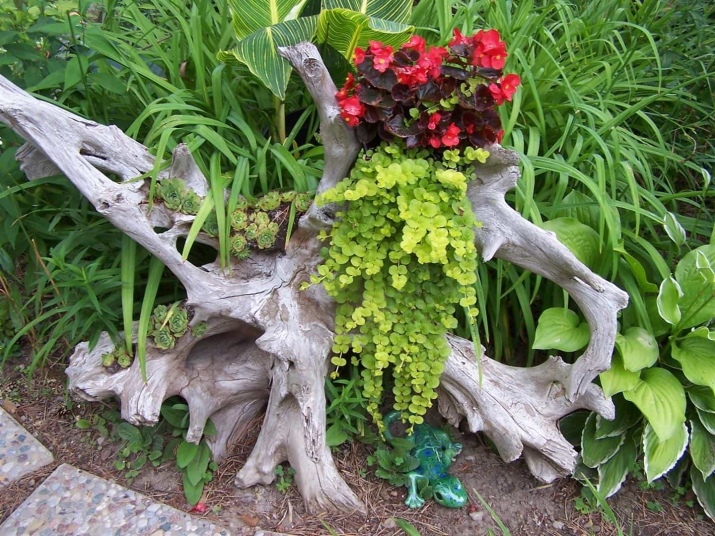

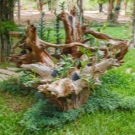
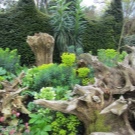
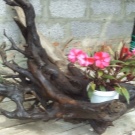
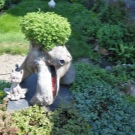
How to handle a tree stump?
If the processing is carried out correctly, then the wooden part of the flower bed will be well preserved for many years. With your own hands, it is possible to make a depression in an old tree, fill it with earth and plant flowers. This is the simplest solution to the problem.
It may seem that hollowing out a hole is not so easy, but anyone can cope with such work, if there were the necessary tools on the farm. From old wood, you can come up with many decorations for the site.
First of all, you should carefully examine the stump and determine its condition. If it is badly damaged, then all efforts to refine it may become in vain, and the remnants of the rhizome themselves will be a serious source of problems for the rest of the plants on the site. It is possible to use for decorative purposes only well-preserved stumps, which have no obvious signs of destruction. If the process of decay has begun, it is almost impossible to stop it.
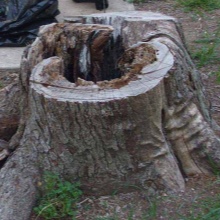
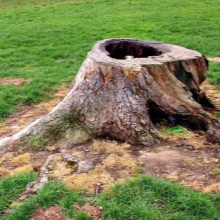
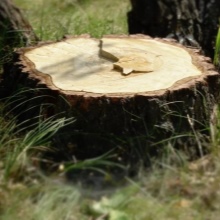
Stumps with preserved bark are best suited for a flower garden, which will protect the tree from the sun and excess moisture. The exception is the black bark, which itself is damaged and will only interfere. In addition, pests usually accumulate under it, which destroy the tree. There are tree species whose stumps are in no way suitable for creating a flower garden. These are poplar, cherry and walnut.
When starting work at a distance of 5-7 cm from the edge, an even circle should be drawn. It will mark the boundaries of the future pot. At the stump, it is imperative to keep a part of the sapwood - an intact layer. Without this, the stump will quickly collapse. If the stump is small, then it is enough to leave an intact part with a thickness of 20 mm, if the size of the saw cut is from 60 to 80 cm, then 50 mm is required.
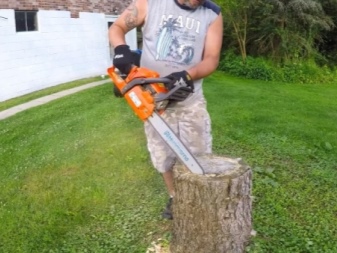
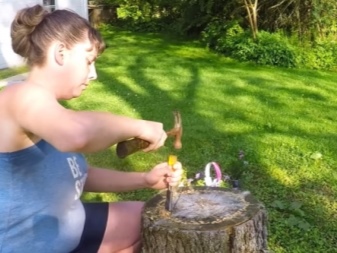
The easiest ways to create a groove.
- Make cuts, and then use a chisel to remove excess wood.
- Light a small fire in the center of the circle and burn a hole.
- Drill a hole and add Epsom salt or saltpeter. As a result, within a few weeks, thanks to the ongoing chemical processes in the tree, the necessary deepening will be obtained.
- It is possible to cut a hole with a hoe. All that remains to be done is to give it the necessary shape.
The depth of the hole largely depends on the size of the stump, but it should be at least 10-20 cm. The amount of soil introduced into this kind of pot will also affect the choice of the assortment of plants.
This is not the end of the list of necessary measures to bring the stump into a state suitable for growing flowers. It is necessary to create a drainage system so that the water inside the stump does not stagnate, contributing to its rotting. Holes are drilled in the remains of the tree at an angle of 45 degrees with respect to the ground with a drill with a diameter of 1.5 cm. A layer of crushed stone or small pebbles is laid at the bottom of the recess.
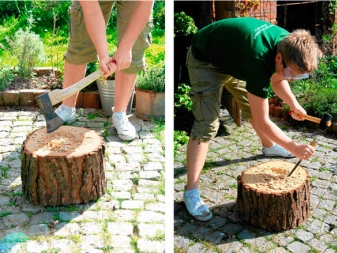
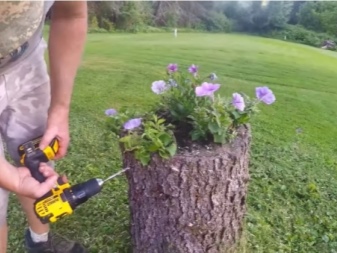
It is also important to treat wood with mordants and bioseptics. They will slow down the decay process and will not let young shoots start up. Also, experienced gardeners with extensive experience in performing this type of work strongly advise, in order to avoid serious problems in the future, to open the stump and cut it off from the rhizome. In this way, the connection between the stump and the soil is broken, finally killing it.
What follows is the simplest and most enjoyable part of the job. The earth is filled up, and plants are planted.

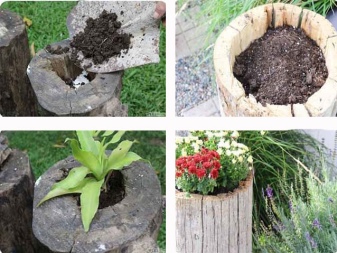
Decor options
It is possible to decorate a flower bed in a variety of styles, including using plants to completely decorate the remains of the stump. Both annual and perennial crops can decorate a flower garden. It is quite difficult to turn small stumps into something special, but here it is also possible to beat the use of bright colors that immediately attract attention. If the cut surface is too dark, it is bleached with Whiteness. Then, to give the wood a shine, highlight and protect it from decay, it is covered with a layer of varnish.
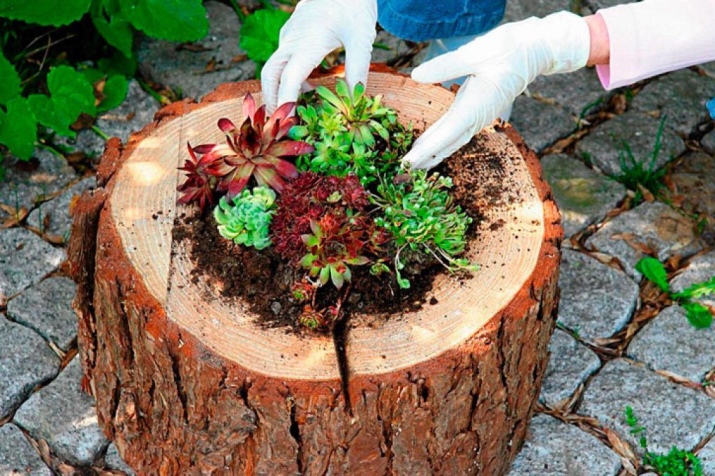
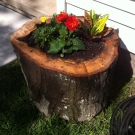


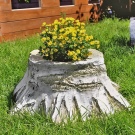
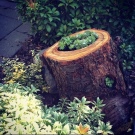
Soil preparation and planting
To create suitable conditions that fully ensure the growth and development of flowers, 2 parts of soil and 1 part of compost are taken. The mixture is well mixed and only after that it is poured into the remains of the stump.
Planting flowers should take place in the center, if possible, so that the plant has room for further growth.
It is advisable to plant not seeds in such a flower bed, but already sufficiently grown and strengthened sprouts. For this, the selected specimens are usually grown in a greenhouse and only then placed in a new flower garden.
When caring for a flower bed, remember that it needs frequent watering, since more intense evaporation is coming from its surface. Two waterings on very hot days will be enough. It is also necessary to remember that before the roots take root sufficiently, the flower bed has two enemies - precipitation and wind. To prevent the soil from being blown out and washed away, sprinkle it on top with a thin layer of shavings.
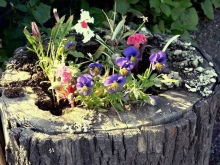
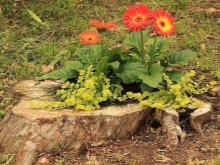
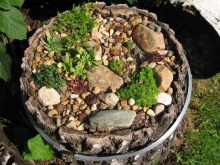
What kind of flowers can you plant?
When planting flowers in the groove of the stump, it should be borne in mind that they will grow about 30-40 cm above the soil surface. The ideal option would be to plant flowers with a falling crown. In this case, the flower garden will look more voluminous. For this design option, you should choose:
- morning glory;
- petunia;
- nasturtium.
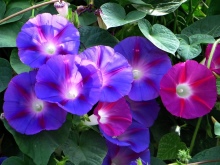
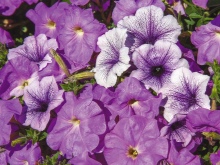
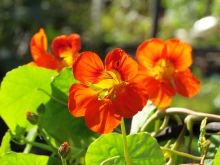
Growing from hemp in a flower cottage is not as painstaking as it might seem. Plants need to be looked after in the same way as those that grow in ordinary pots.
If the remains of the stump do not rise much above the soil, then only those of them that have a weakly developed root system can be placed in it. In some cases, to prevent rotting, the depression in the stump is painted. The presence of paint does not have the most beneficial effect on plants, so crops must be sufficiently hardy. These can be succulents or saxifrage.
How to make a beautiful flower bed from a stump with your own hands, see the video.







































































































The comment was sent successfully.